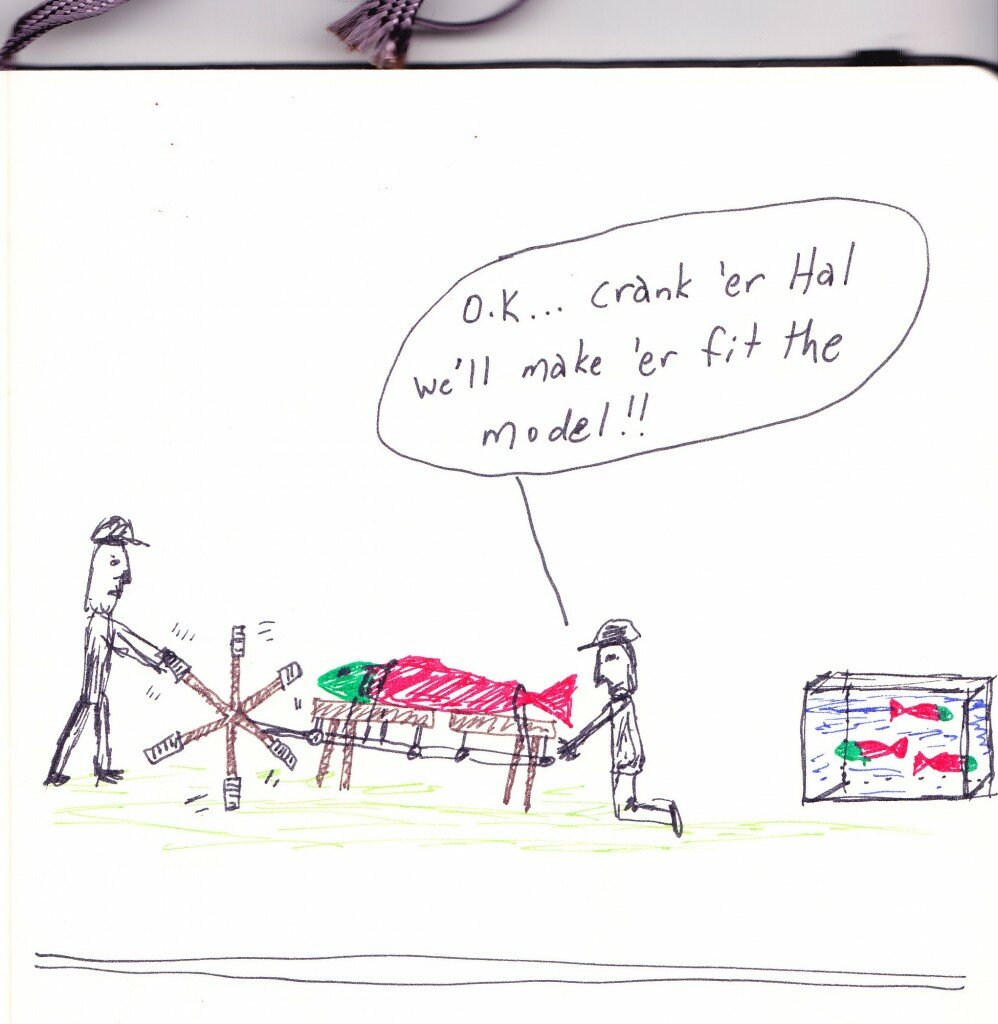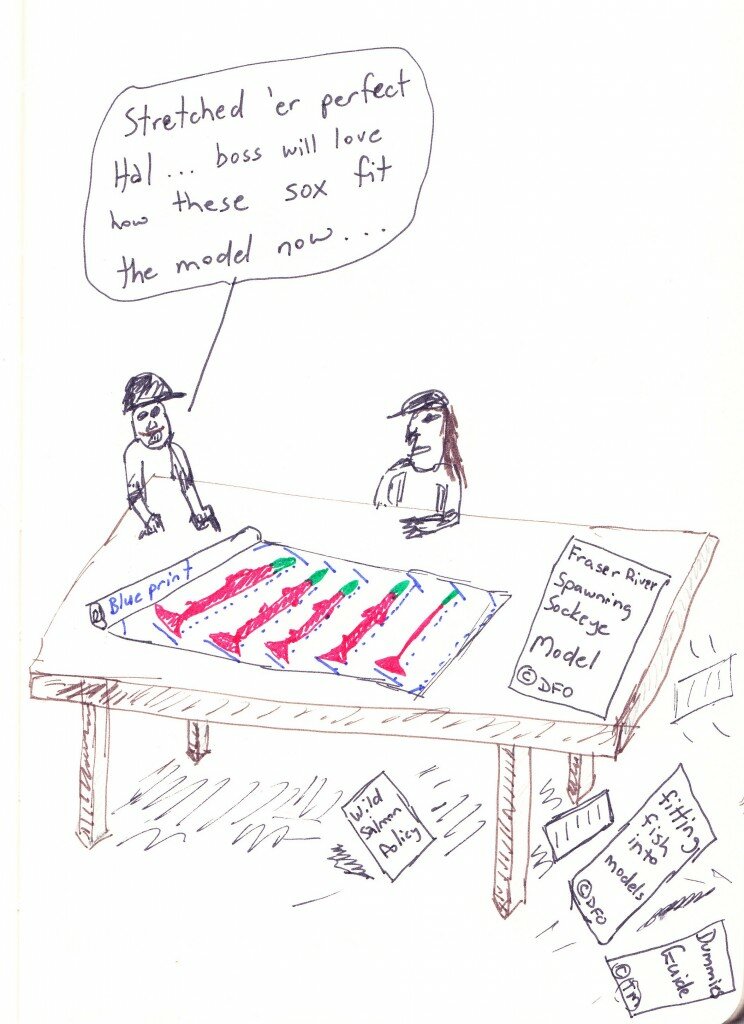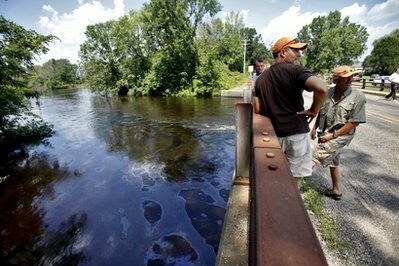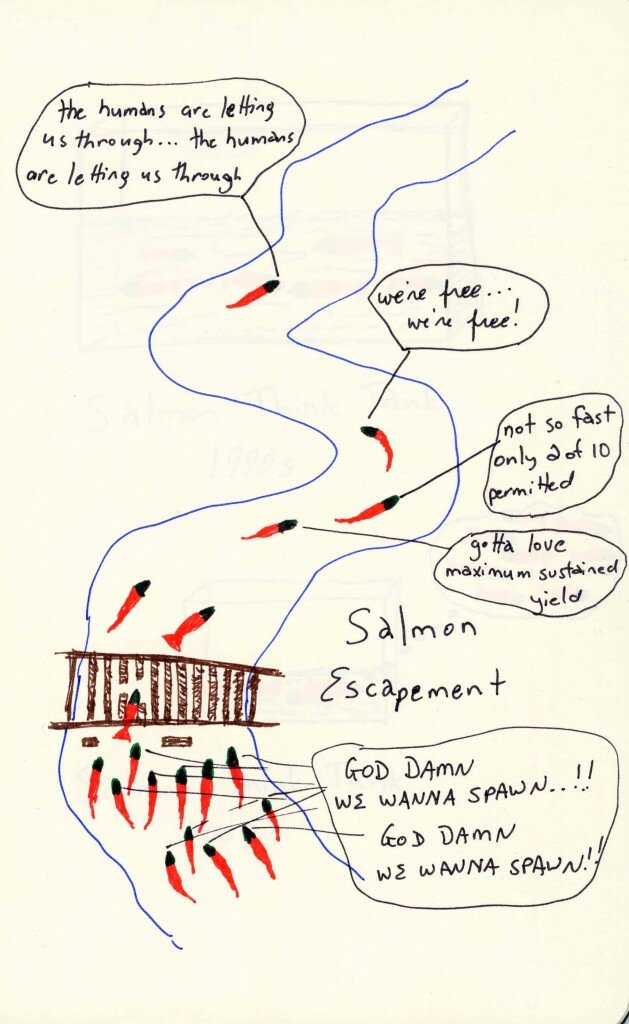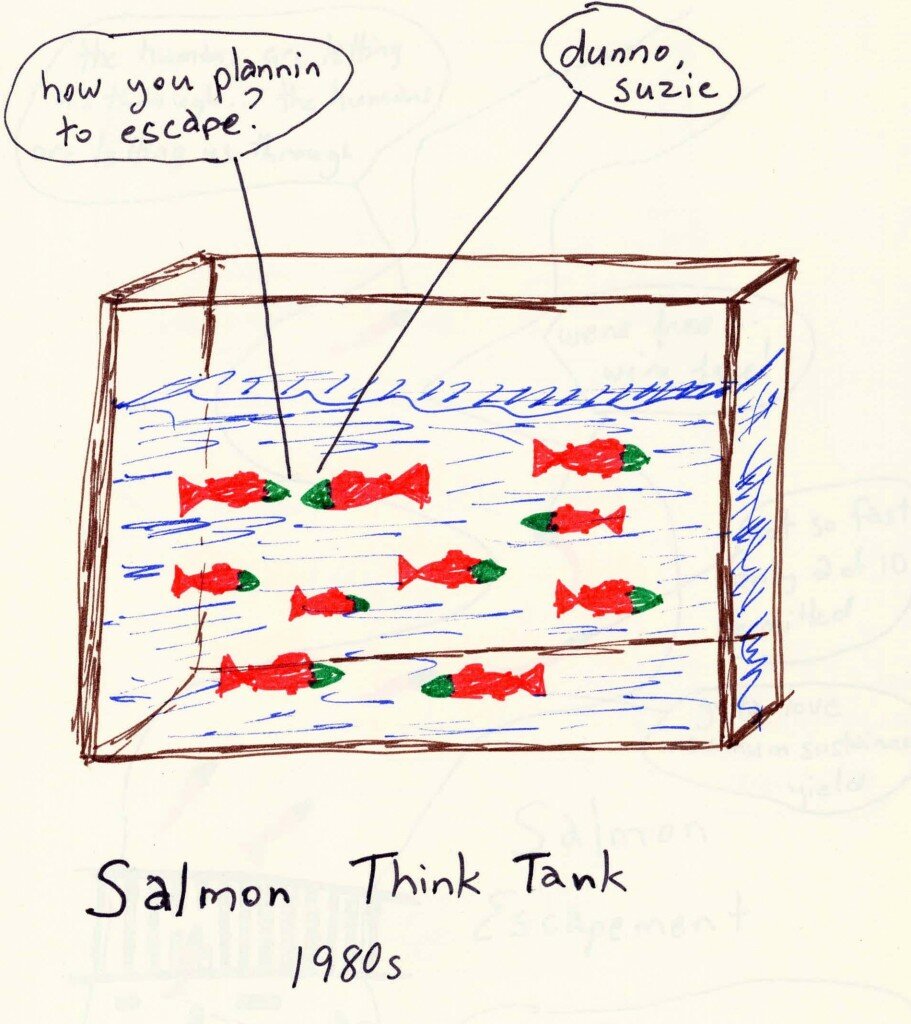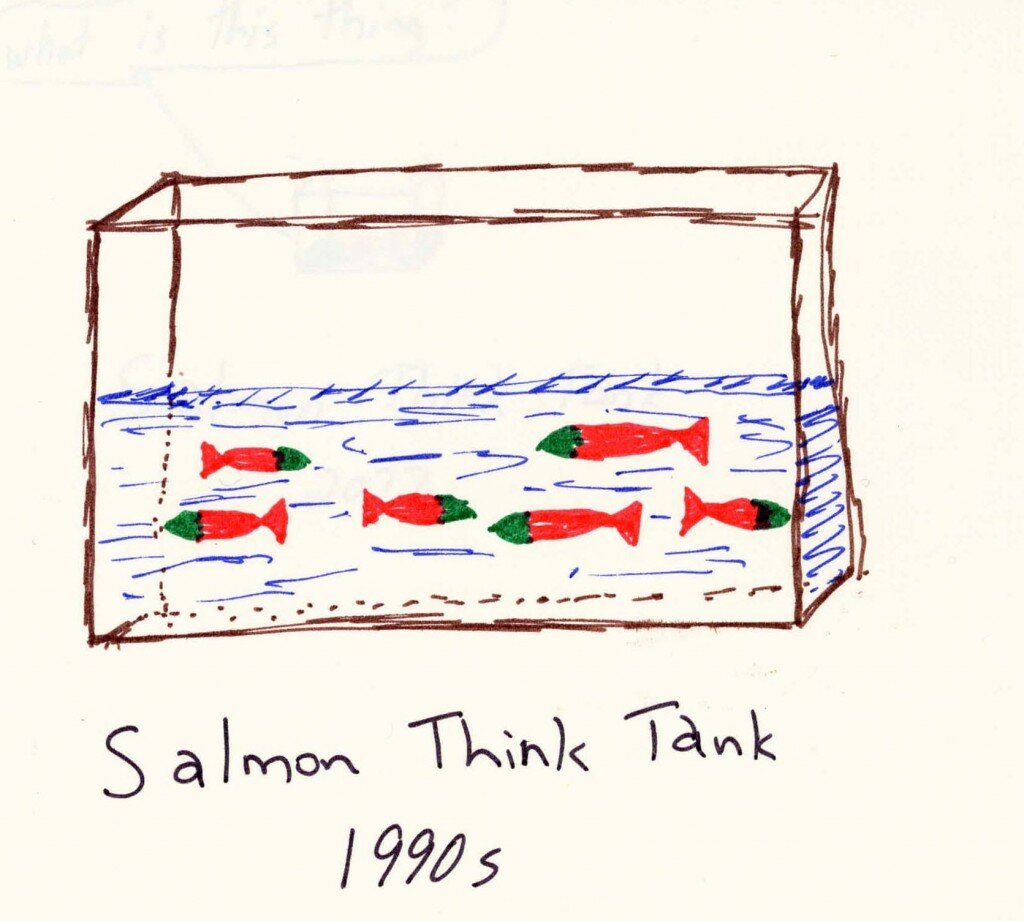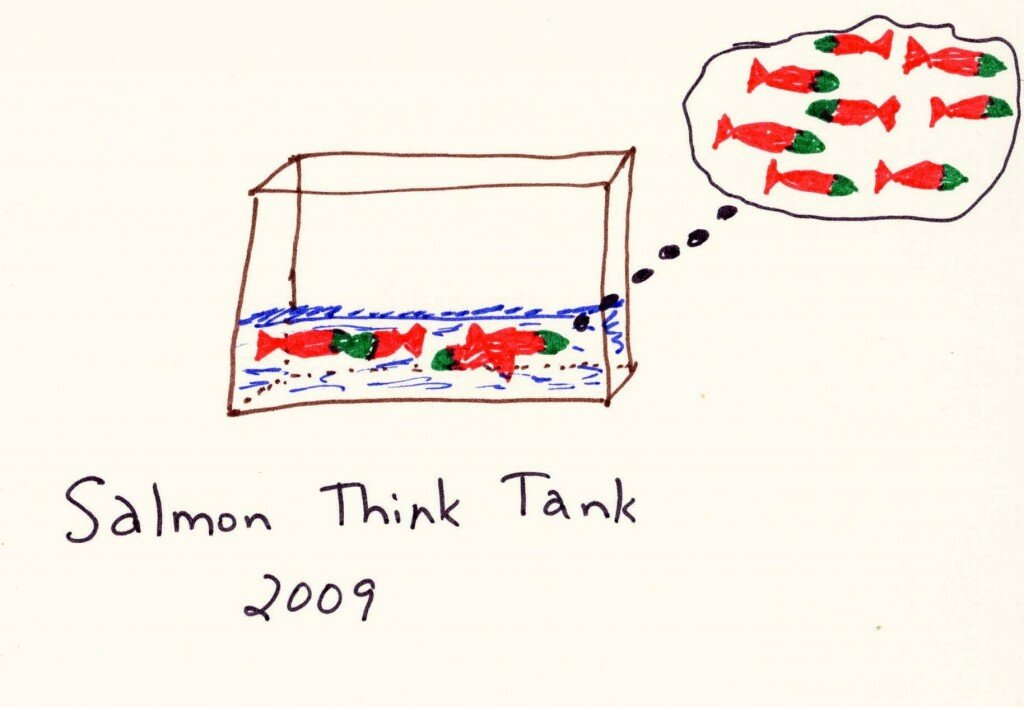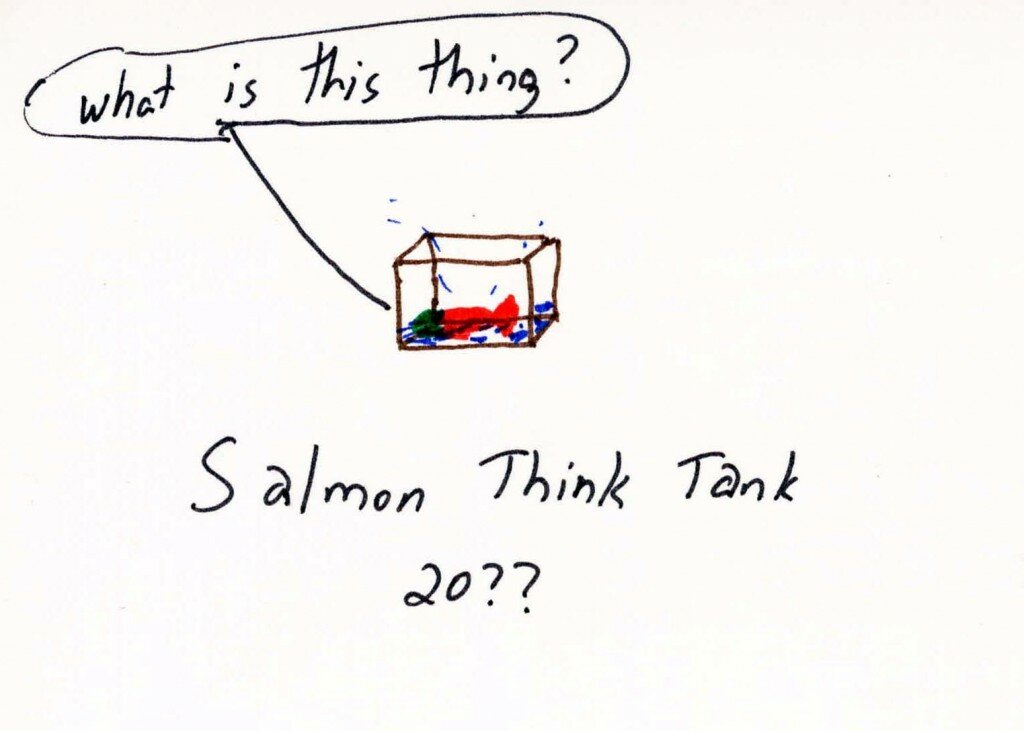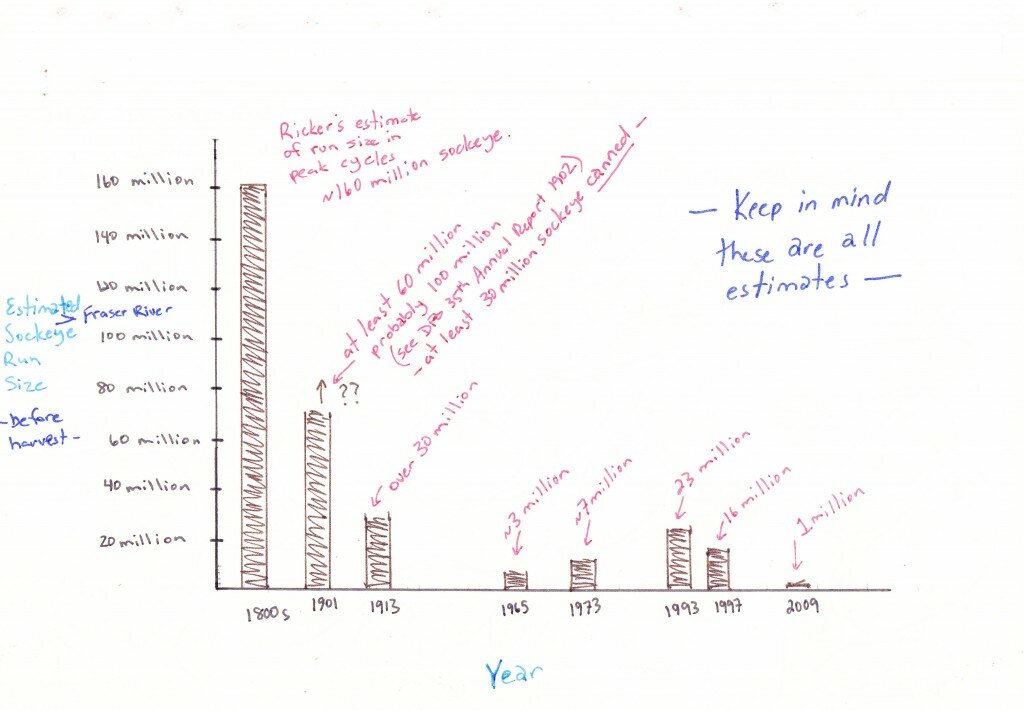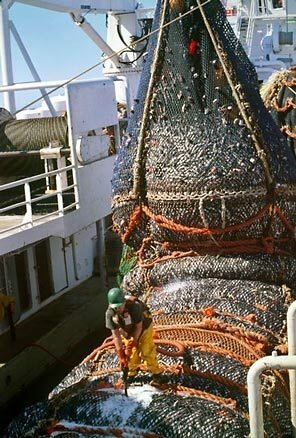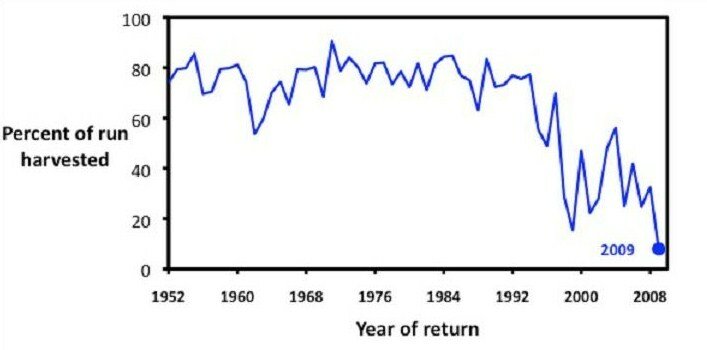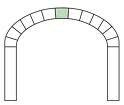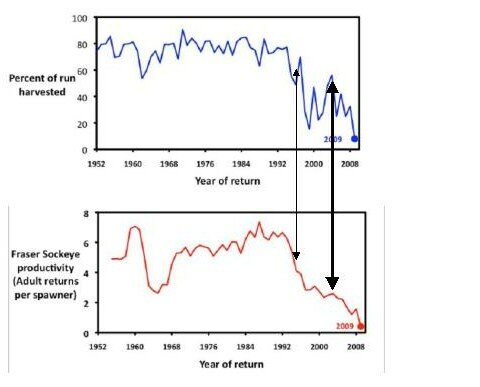The other day I listened into an update conference call on various sockeye salmon forecasts (“in-season” compared to “pre-season), environmental forecasts, salmon modeling, environmental modeling, guesstimates, estimates, predictions, test fishing, genetic classification, and so on and so on.
There is definitely far more “scientific” guesstimates and conference calls going on then commercial fishing these days. It’s quite an industry… compare this computer model estimate with that computer model estimate compared to this pre-season modeling effort compared to that pre-season estimate compared to this in-season model and that simulation… well… you can guess at the rest of that story.
Fair enough to some of it… there should be a rough idea of what’s out there before industrial scale fisheries set out to catch as much as possible in as short a period of time. The old “if I don’t catch it… someone else will…”
I did hear a very, very telling comment from a rather senior scientist on the conference call:
“…THERE IS A FAIR AMOUNT OF UNCERTAINTY…”
Yeah… you bet there is… and thank-you for that honest statement.
However, it’s such a curious phrase… what is a “fair” amount of uncertainty? “Fair” compared to what…? What if we had “unfair amount of uncertainty”? (but then that’s semantics, isn’t it?)
_ _ _ _ _
One of the curious discussions on the call was how this year’s very cautious pre-season forecasts were being beaten in many cases — sockeye runs are returning better than expected and better than “computer models” were pumping out. Apparently this year, various management institutions and fisheries scientists applied more cautious estimates (or at least parameters in computer models) so that there wasn’t a repeat of last year’s fiasco and blown forecasts.
The new fall colors for salmon forecasting this year have been “blushing red” … as in:
“well… gee… you know, pre-season salmon forecasting is a very imprecise activity”.
See post from a few months ago: to put it into perspective.
With this sort of confession, I then tend to ask: “well… why is your in-season forecasting all that much better?”
Or, “if your pre-season is so inaccurate… what’s the point of running disastrous computer modeling programs like the Fraser River Spawning Sockeye Initiative (FRSSI)? Am I to believe it will be better? And if it’s better… how much better than pre-season?”
_ _ _ _ _
One of the bizarre exchanges on the phone call was a discussion around this year’s new “model” forecasts, as compared to the modeling used in last year’s disaster forecast (e.g. 10 million Fraser sockeye forecast and only 1.3 million returned). If last year’s methods of modeling had been used this year, they would have apparently churned out numbers close to what we are seeing returning this year.
But… instead… this year we are depending on “new” models that would do a better job than last year.
OK, this is just Hollywood script-like. Last year’s modeling techniques sucked (e.g. blown forecasts on the high side); however this year’s modeling techniques suck too (blown forecasts on the low side) – yet last year’s techniques used this year would have produced forecasts that are actually closer to reality.
Bizarre… even more bizarre was that there seemed to be a positive tone in the discussion surrounding this bizarre anomaly.
e.g: “gee.. good to know…”
I’m not so sure I’d be shopping that reality around… isn’t there a comparison to be drawn with having financial forecasting tools that didn’t catch the crash of the markets (i.e. were wrong) in 08, and then suggesting… you know, if we used the tools that blew last year, this year, they would be right this year…
(Yeah great… all my money’s gone now, but if I still had some – things would have been better this year… bizarre).
_ _ _ _
Not too long ago a respected fisheries biologist asked me if I knew the old Greek story of Procrustes’ Bed.
No, I said. And he proceeded to tell me.
His reason for telling me the Procrustes story, was that I was asking questions about the Department of Fisheries and Oceans’ latest computer modeling program — FRSSI, the Fraser River Spawning Sockeye Initiative…
Procrustes’ Bed, he told me, Procrustes’ Bed…:
Procrustes was a host who adjusted his guests to their bed.
Procrustes, whose name means “he who stretches”, was arguably the most interesting of Theseus’s challenges on the way to becoming a hero.He kept a house by the side of the road where he offered hospitality to passing strangers, who were invited in for a pleasant meal and a night’s rest in his very special bed. Procrustes described it as having the unique property that its length exactly matched whomsoever lay down upon it.
What Procrustes didn’t volunteer was the method by which this “one-size-fits-all” was achieved, namely as soon as the guest lay down Procrustes went to work upon him, stretching him on the rack if he was too short for the bed and chopping off his legs if he was too long. Theseus turned the tables on Procrustes, fatally adjusting him to fit his own bed.
I get the feeling that when it comes to modeling salmon populations… Procrustes is very fitting… “he who stretches…”

